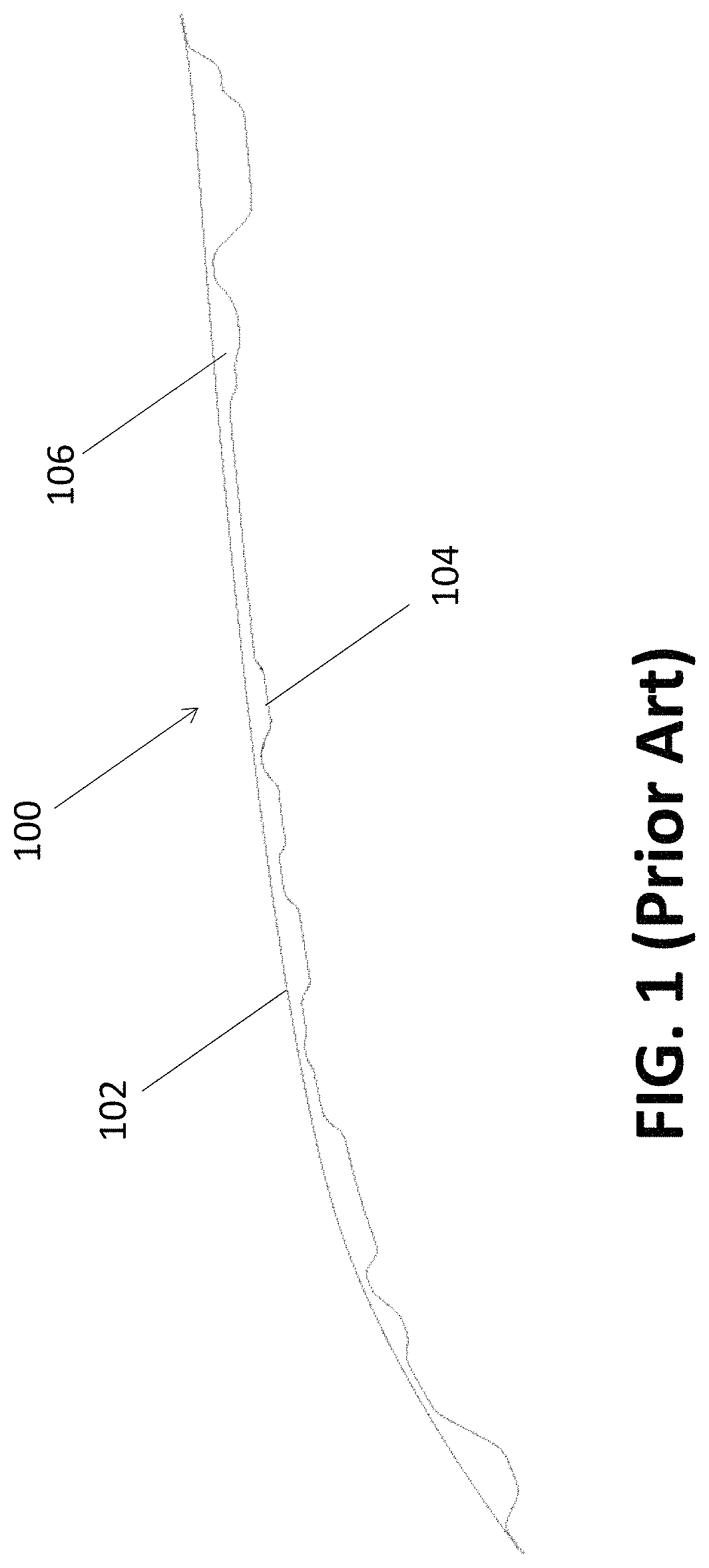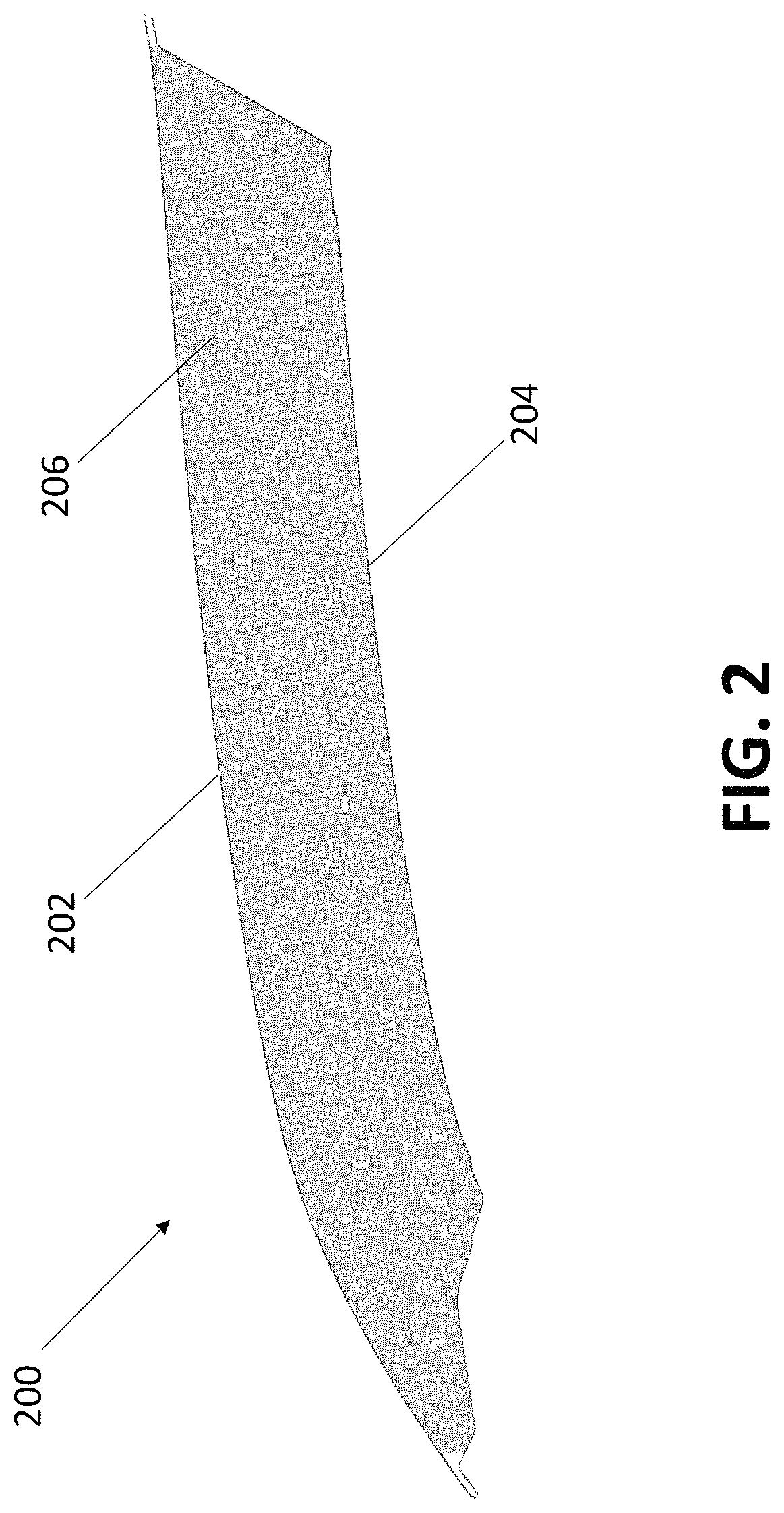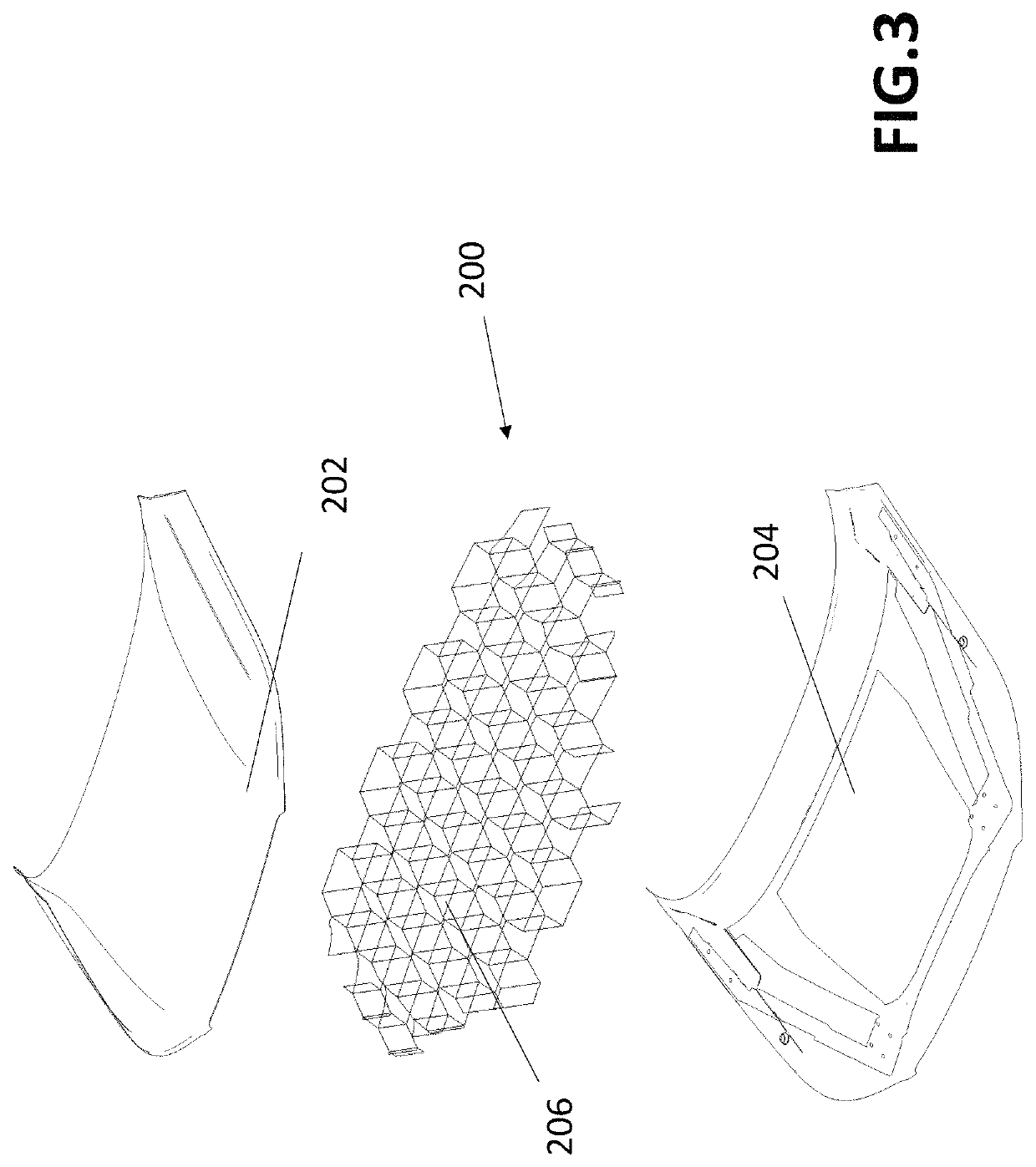Automobile hood for decoupled pedestrian safety and durability
a technology for pedestrian safety and durability, applied in the direction of vehicle components, superstructure subunits, roofs, etc., can solve problems such as trade-off requirements, and achieve the effects of stiffness and stability, and reducing strength and stiffness
- Summary
- Abstract
- Description
- Claims
- Application Information
AI Technical Summary
Benefits of technology
Problems solved by technology
Method used
Image
Examples
example
[0027]An automobile hood constructed according to the present invention (Design B) is compared to one constructed as shown in FIG. 1 and described above (Design A). Design B contains a core having a honeycomb structure made of hexagonal cell with a density of 110 mm and a thickness of approximately 8 mm. The core material is a polypropylene with a Young's modulus of 2300 MPa and a density of 1.02 g / cm3. The inner hood structure is made of a SMC membrane containing carbon fibres and a vinylester matrix (2 mm thick). The material has a Young's modulus of 62100 MPa and a density of 1.48 g / cm3. Reinforced fibre patches (1 mm thick) are glued to the SMC membrane in a pattern similar to that of FIG. 4. The patches are made of a carbon fibre / epoxy material with Young's moduli of E11=94500 MPa, E22=8000 MPa, G12=4000 MPa and a density of 1.45 g / cm3. The outer hood of Design A is identical to the outer hood of Design B which is made of aluminum.
[0028]Table 1 shows the normalized result of De...
PUM
 Login to View More
Login to View More Abstract
Description
Claims
Application Information
 Login to View More
Login to View More - R&D
- Intellectual Property
- Life Sciences
- Materials
- Tech Scout
- Unparalleled Data Quality
- Higher Quality Content
- 60% Fewer Hallucinations
Browse by: Latest US Patents, China's latest patents, Technical Efficacy Thesaurus, Application Domain, Technology Topic, Popular Technical Reports.
© 2025 PatSnap. All rights reserved.Legal|Privacy policy|Modern Slavery Act Transparency Statement|Sitemap|About US| Contact US: help@patsnap.com



